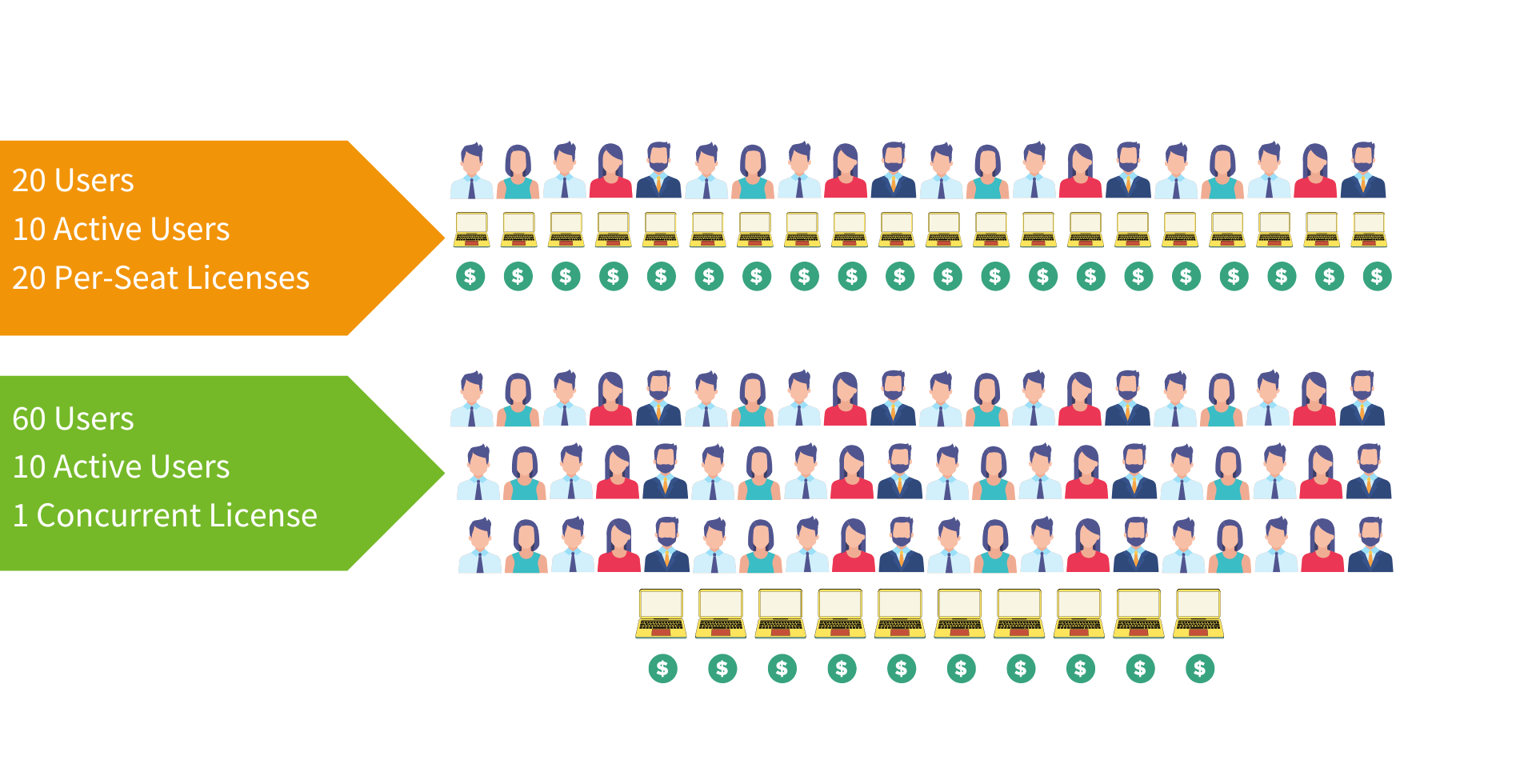Concurrent License
CloudOffix is the first and only cloud vendor that offers concurrent licensing together with per user license.
What is Concurrent Licensing (Floating License)?
Flexibility and Cost Savings with Concurrent Licensing in SaaS Software Models
A concurrent software license, also known as a floating license, is an end user license that is based on the number of simultaneous users accessing a system. Unlike traditional software licenses, concurrent licenses allow for the creation of unlimited user accounts. However, only a limited number of users can log in to the system at the same time.
For example, with a ten-user concurrent software license, once ten users are logged in, the eleventh user is prohibited from accessing the system. When any of the initial ten users log out, the next user can then log in. Concurrent licenses are commonly used in SaaS (Software as a Service) license models, offering flexibility and efficient utilization of software licenses.
Flexible
Access from anywhere and anytime, transfer access easily.
Cost-Efficient
Pay only for licenses in use, save on occasional access.
Optimal Usage
Set concurrent access levels, avoid workflow disruptions.
Unlimited Accounts
Open as many accounts as needed on multiple devices.
What is the difference between named user licence (per seat licence) and Concurrent User License?
For example, you have 1000 people who need access to the system from time to time. Even though only a fraction of them use the system on a daily basis, you need to buy 1000 named user licenses to cover all people. In a concurrent license model for the same example, it is enough to buy number of licenses that will be used simultaneously.
Benefits of Concurrent Licensing
Rather than subscribing to hundreds or thousands of per seat licenses, you can subscribe to concurrent license model in a very cost effective way. You can create as many user accounts as you need and increase the number of concurrent license according to the number of users logging into the system simultaneously. For the long term, it is very obvious that concurrent licenses are very attractive and cost effective.
An Example of Concurrent Licensing Model
.png)
Let's say a company has 20 employees who need access to a particular software tool. If they were to purchase individual licenses for each employee, it might cost them $500 per license, for a total cost of $10,000.
However, if they were to use concurrent user licensing instead, they might only need to purchase 10 licenses to cover the maximum number of employees expected to use the software at the same time. This would reduce their total cost to $5,000, resulting in a savings of $5,000.

.png)